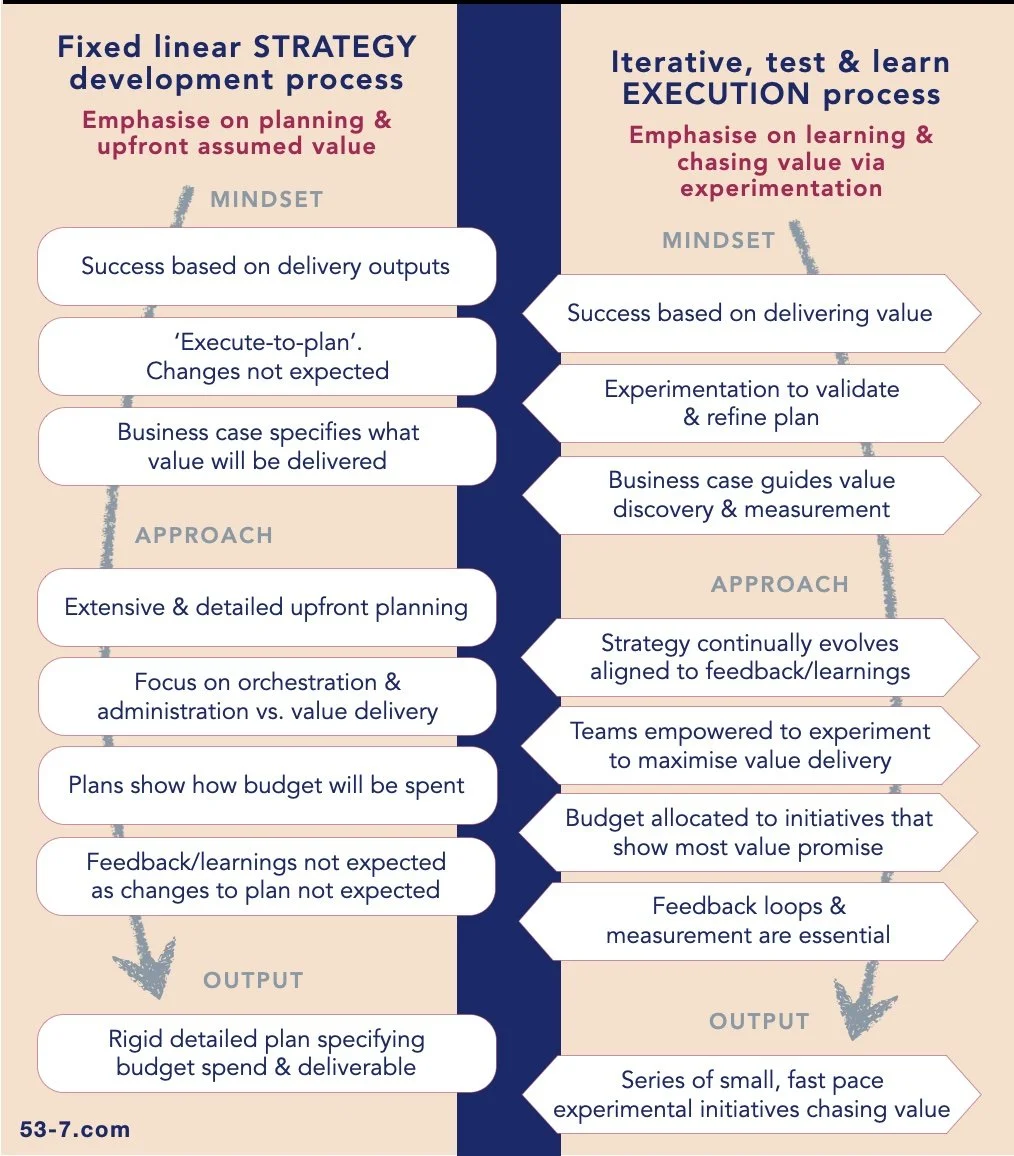Aligning Strategy & Execution for maximum value
Many technology initiatives stall or fail to unlock their full potential due to a fundamental misalignment between strategy and execution.
Modern digital transformation embraces agile, product-centric models with rapid, iterative cycles. However, their success is often undermined by outdated strategic planning, funding and governance practices.
The problem: fixed, linear strategy development
Legacy governance and funding models prioritise extensive upfront planning and rigid execution, preventing businesses from adapting and realising value quickly. Traditional strategy development follows an annual budgeting cycle, assuming a fixed path without anticipating necessary course corrections. Without robust measurement mechanisms, plan deliverables become a false proxy for value delivery. Funding approvals hinge on predefined spending plans rather than adaptable, value-driven learnings.
The cost of conflicting approaches
Companies seeking business value from digital initiatives face a disconnect.
The old-school strategic approach does not align with modern, agile execution methods. While technology teams embrace flexibility and rapid iteration, decision-making remains bogged down in slow governance and hierarchical approval processes.
This misalignment results in:
Inability to reprioritise work and budgets efficiently.
Weak feedback loops, delaying value-driven decisions.
Increased costs, wasted resources and longer time-to-value.
Building blocks for alignment
Alignment is unlikely to happen by simply explaining the benefits of agile delivery. It needs a clear, commercial-focused conversation that provides reassurance that it isn't about abandoning structure—it's about making structure flexible.
1. Align strategy & execution with adaptive planning
Adopt an Emergent Strategy model that evolves based on execution insights
Implement shorter planning cycles, enabling the execution teams to pivot quickly in response to test-learn findings.
Foster cross-functional leadership collaboration to ensure strategic goals are dynamically refined alongside execution teams.
2. Shift to value-driven funding & governance
Move away from rigid annual budget cycles and adopt a continuous funding model.
Treat initiatives as investment portfolios, scaling successful efforts while discontinuing those that fail to generate value.
Adopt value-driven governance, using leading indicators of business value to guide decisions and progress monitoring.
3. Embed business value accountability
Define, incentivise and reward success on business outcomes and make teams accountable for demonstrating how their work contributes.
Make everyone accountable for demonstrating how their work contributes to value creation.
Integrate business leaders into product teams to create a direct link between execution and value realisation.
By embedding agility in both strategy and execution, organisations can accelerate business value creation and gain a competitive edge. Business leaders must drive this shift, ensuring strategy and execution remain fully aligned towards measurable results.
How is strategy-execution misalignment affecting your technology initiatives?
